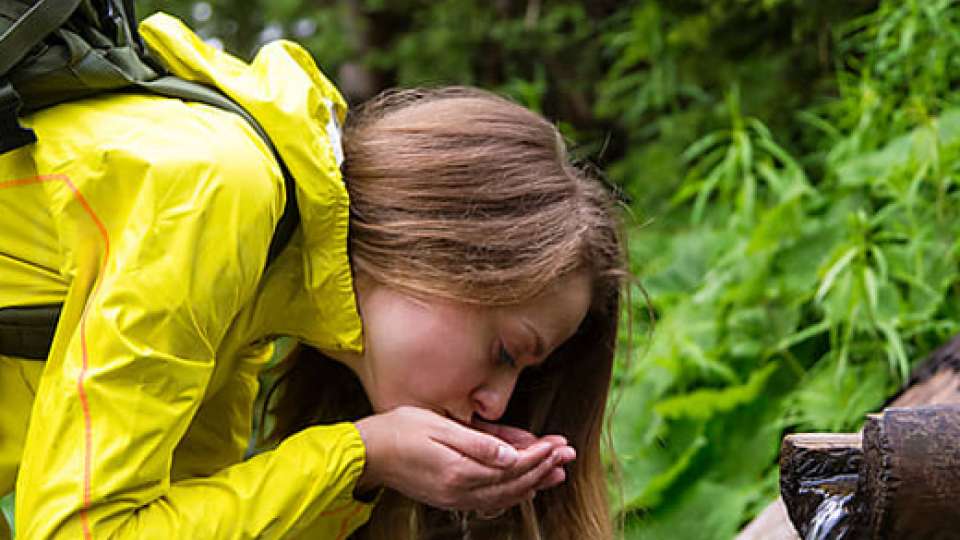
Move over La Croix, there’s a new trendy water in town. Raw water—that is neither filtered, treated or sterilized—is being touted by some as the ultimate health elixir.
Advocates say the taste and mouthfeel of raw water is superior to that of tap water and that, because it bypasses the public water treatment, it’s more “pure.” Regardless of what attracts people to it, raw water devotees are waiting in long lines to fill up for free at artesian wells or in some cases paying double digits for a couple liters of the unfiltered stuff.
But does raw water live up to the hype, or is it better left in nature? Here’s the good, bad and ugly of the raw water trend.
Tap water goes through the public water treatment system
In Seattle’s greater metropolitan region, our water comes from two nearby watersheds. Before reaching your tap, it’s treated to destroy any bacteria, viruses and parasites, and the pH level is adjusted so it won’t leach copper and lead from your pipes.
Raw water that comes directly from springs and wells goes through none of this. And that’s part of its appeal to many of its enthusiasts. They say that water treatment strips not just flavor from water but also valuable minerals and good bacteria—or probiotics—too.
So why do we put our tap water through all this treatment?
Some of the bad boys that might be hiding in untreated raw water are parasites like Giardia and Cryptosporidium; bacteria like Shigella, Salmonella and E. coli; and viruses like norovirus and rotavirus—microbial menaces that hijack your intestines like alien invaders.
With most of these illnesses you can expect diarrhea, fever and abdominal cramping at the very least. If an infection by some of these bugs spreads outside of your intestines or if you are very young, elderly or have a weakened immune system, you can die.
Scott Meschke, Ph.D., J.D., an environmental and occupational health microbiologist and a specialist in water safety at the University of Washington School of Public Health, says that potentially dangerous substances besides micro-organisms can lurk in untreated water as well: substances like carcinogenic heavy metals such as arsenic, cadmium, lead and copper; fertilizers; chemicals found in household products—and none of them are good for you.
“Really what it comes down to is a probability game,” says Meschke. “You might drink the water a few hundred times and not get sick, but that one time you do, you will really regret it.”
If you’re going to drink raw water anyway
If you are going to drink raw water, Meschke advises you to find a source where the water comes from deep in the ground. That’s because surface contaminants carried by groundwater are less likely to reach that far.
The Seattle area just happens to have a raw water source that comes from deep in the ground—the 164th Street Artesian Well in Lynnwood. It’s one of the rare raw water sources in the country that is also part of a public water district and is held to the same strict EPA and Department of Health standards as tap.
"People have forgotten what it was like back before we took clean water for granted,” says Meschke.
Tap isn't trendy, but...
The United States has clean water to thank for the historic drop in mortality that occurred during the late 19th and early 20th centuries.
What about those good bacteria that are getting zapped along with the bad in the water treatment process?
"There is not a high enough concentration of probiotics in water to make a difference,” says Meschke. “You’re far better off eating a yogurt."

 Healthy ideas for your inbox
Healthy ideas for your inbox





